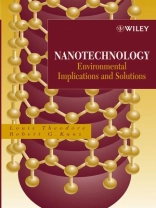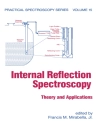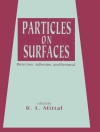An authoritative, in-depth exploration of the environmental
consequences of nanotechnology
Nanotechnology is revolutionizing the chemical, telecom, biotech,
pharmaceutical, health care, aerospace, and computer industries,
among others, and many exciting new nanotech applications are
envisioned for the near future. While the rapid pace of innovation
has been truly inspiring, much remains to be learned about the
potential environmental and health risks posed by this nascent
technology and its byproducts. So important is this issue that the
ultimate success or failure of nanotechnology may well depend on
how effectively science and industry address these concerns in the
years ahead.
Written by two highly accomplished environmental professionals,
Nanotechnology: Environmental Implications and Solutions brings
scientists, engineers, and policymakers up to speed on the current
state of knowledge in this vitally important area. Professor
Theodore and Dr. Kunz provide a concise review of nano-fundamentals
and explore background issues surrounding nanotechnology and its
environmental impact. They then follow up with in-depth discussions
of:
* The control, monitoring, and reduction of nanotech byproducts and
their impact on the air, water, and land
* Health risks associated with nanotechnology, and methods to
assess and control them
* Nanotech hazard risk assessment-including emergency response
planning and personnel training
* Multimedia approaches that are available for the analysis of the
impact of nanotechnology in the chemical, manufacturing, and waste
disposal industries
* The future of nanotechnology and the ‘Industrial Revolution
II’
* The legal implications of nanotechnology
* Societal and ethical implications of nanotechnology-based
materials and processing method
Assuming only a basic knowledge of physics, chemistry, and
mathematics on behalf of its readers, Nanotechnology: Environmental
Implications and Solutions makes fascinating and useful reading for
engineers, scientists, administrators, environmental regulatory
officials, and public policy makers, as well as students in a range
of science and engineering disciplines.
Inhoudsopgave
Preface.
Foreword by Rita D’Aquino.
1 NANOTECHNOLOGY/ENVIRONMENTALOVERVIEW.
1.1 Introduction.
1.2 Survey of Nanotechnology Applications.
1.3 Legal Considerations for Nanotechnology by A. Calderone.
1.4 Recent Patent Activity.
1.5 Environmental Implications.
1.6 Current Environmental Regulations.
1.7 Classification and Sources of Pollutants.
1.8 Effects of Pollutants.
1.9 Text Contents.
1.10 Summary.
References.
2 NANOTECHNOLOGY: TURNING BASIC SCIENCE INTO REALITY(Suzanne A. Shelley).
2.1 Introduction.
2.2 Basic Chemistry and Size-Related Properties.
2.3 Nanotechnology: Prime Materials and Manufacturing Methods.
2.4 Carbon Nanotubes and Buckyballs.
2.5 Current and Future Market Applications.
2.6 Analytical Methods.
2.7 Health and Safety Issues: Ethical, Legal, and Societal Implications.
2.8 Funding Future Developmental Efforts.
2.9 Summary.
References.
3 AIR ISSUES.
3.1 Introduction.
3.2 Air Pollution Control Equipment.
3.3 Atmospheric Dispersion Modeling.
3.4 Stack Design.
3.5 Indoor Air Quality.
3.6 Monitoring Methods.
3.7 Summary.
References.
4 WATER ISSUES.
4.1 Introduction.
4.2 Industrial Wastewater Management.
4.3 Municipal Wastewater Treatment.
4.4 Dispersion Modeling in Water Systems.
4.5 Monitoring Methods.
4.6 Summary.
References.
5 SOLID WASTE ISSUES.
5.1 Introduction.
5.2 Industrial Waste Management.
5.3 Municipal Solid Waste Management.
5.4 Hospital Waste Management.
5.5 Nuclear Waste Management.
5.6 Metals.
5.7 Superfund.
5.8 Monitoring Methods.
5.9 Summary.
References.
6 MULTIMEDIA ANALYSIS.
6.1 Introduction.
6.2 Historical Perspective.
6.3 Multimedia Application: A Chemical Plant.
6.4 Multimedia Application: Products and Services.
6.5 Multimedia Application: A Hazardous Waste Incineration Facility.
6.6 Education and Training.
6.7 Summary.
References.
7 HEALTH RISK ASSESSMENT.
7.1 Introduction.
7.2 Health Risk Assessment Evaluation Process.
7.3 Why Use Risk-Based Decision Making?
7.4 Risk-Based Corrective Action Approach.
7.5 Statutory Requirements Involving Environmental Communication.
7.6 Public Perception of Risk.
7.7 Risk Communication.
7.8 Seven Cardinal Rules of Risk Communication.
7.9 Summary.
References.
8 HAZARD RISK ASSESSMENT.
8.1 Introduction.
8.2 Superfund Amendments and Reauthorization of Act of 1986.
8.3 Need For Emergency Response Planning.
8.4 Emergency Planning.
8.5 Hazards Survey.
8.6 Training of Personnel.
8.7 Hazard Risk Assessment Evaluation Process.
8.8 Summary.
References.
9 ETHICAL CONSIDERATIONS.
9.1 Introduction.
9.2 Air Pollution.
9.3 Water Pollution.
9.4 Solid Waste Pollution.
9.5 Health Concerns.
9.6 Hazard Concerns.
9.7 Summary.
References.
10 FUTURE TRENDS.
10.1 Introduction.
10.2 Air Issues.
10.3 Water Issues.
10.4 Solid Waste Issues.
10.5 Multimedia Concerns and Hazards.
10.6 Health and Hazard Risk Assessment.
10.7 Environmental Ethics.
10.8 Environmental Audits.
10.9 ISO 14000.
10.10 Summary.
References.
NAME INDEX.
SUBJECT INDEX.
Over de auteur
LOUIS THEODORE, Ph D, is Professor in the Chemical
Engineering Department of Manhattan College, in New York City. He
has received awards from the International Air and Waste Management
Association and the American Society for Engineering Education.
ROBERT G. KUNZ, Ph D, is an environmental consultant with
three decades of experience in the petroleum and chemical
industries. He is the recipient of the Water Pollution Control
Federation’s Harrison Prescott Eddy Medal.












